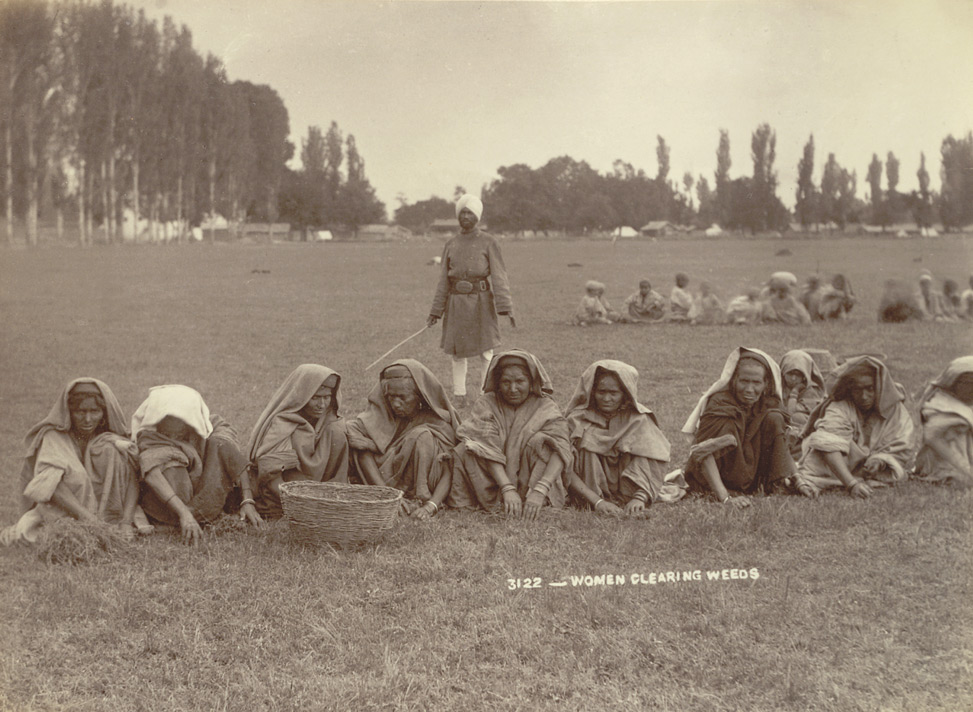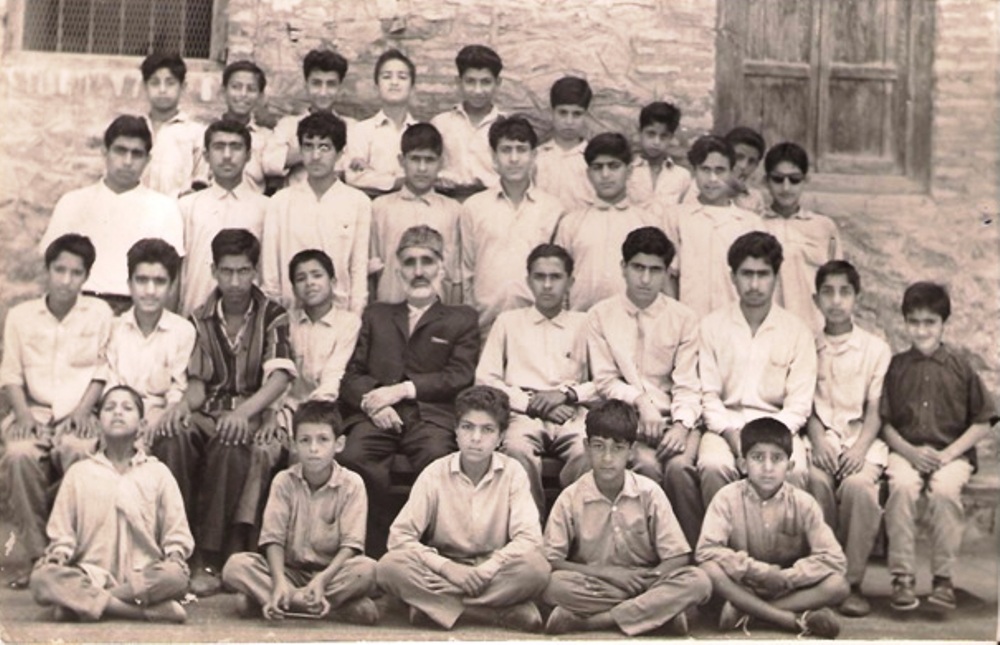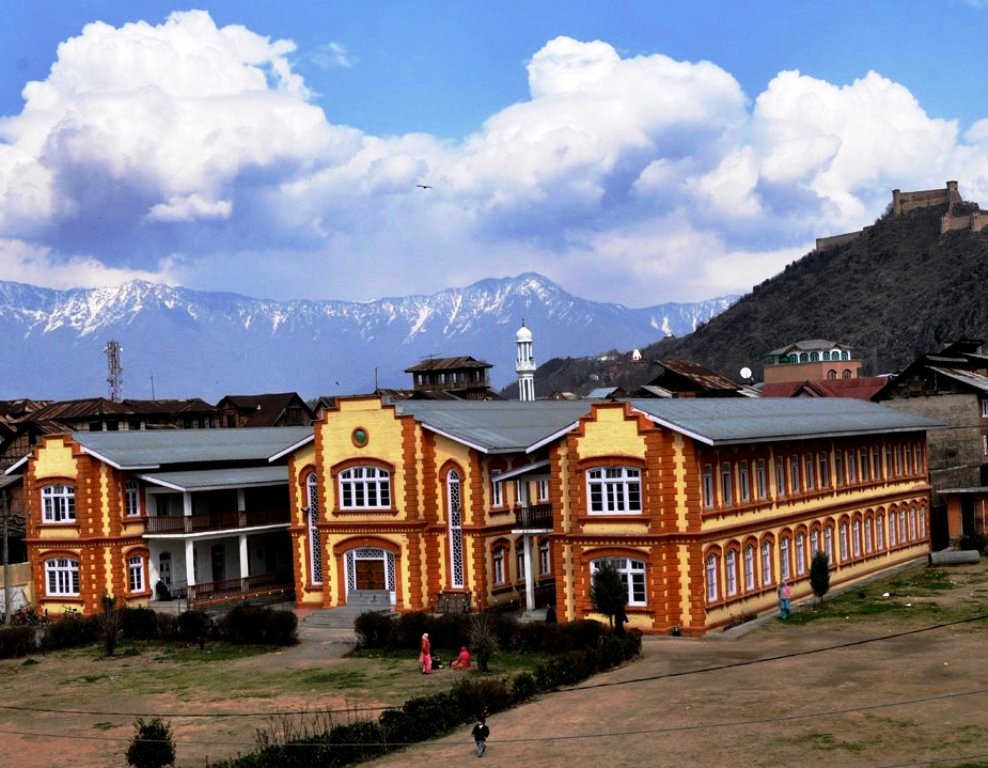In Kashmir’s last two centuries, history has recorded two Khadim’s who contributed in different fields. One Khadim was the scion of a migrant family from Hard Shiva living in Sialkot and another was a school teacher who taught in the Islamia School, MJ Aslam writes

Mian Hassan Dar was a famous person who lived in Hardu Shiva village in north Kashmir’s Zainagir belt, slightly more than 10 km from Sopore. Located between Pohru rivulet and Wullar Lake, Zainagir has been a Mughal-era Pargana, which until the end of the 19th century comprised 31 villages. Most part of the belt is visible from the shrine of Babu Shuk ur Din.
During the Sikh rule in Kashmir, large numbers of “persecuted” Kashmiri Muslims migrated to the plains of Punjab. One among them was Mian Hassan Dar of Hardu Shiva. He settled in the village Ghartal of Sialkot (part of Punjab that now falls in Pakistan). Ghartal had a considerable population of non-Muslims who held Mian Hassan Dar in great esteem as he was a pious and honest Kashmiri Musalman.
It was a time when indifference towards education was a world-known malady of Kashmiri Muslims. Mian Hassan Dar, however, had the foresight and he felt the pulse of the changing times and did not allow his children to remain illiterate. Both his sons, Rajab Ali and Allah Data received education in Sialkot and joined the government.
A Learned Family
Allah Data became a Qanoongo. More intelligent, Rajab Ali served as Mir Munshi in the Sikh government at a time when tensions between Sikhs and the British has started showing up. After the fall of the Sikhs and the rise of the British in Punjab, Munshi Rajab Ali like many other servants of the Sikh government feared reprisals from the new rulers, compelling him to go in hiding for some time. Later, he got the job of a Patwari in the British government of Punjab. He died at Sialkot in 1880. He was survived by three sons. It was his eldest son Munshi Ghulam Mohammad, who was born at Ghartal Sialkote in 1867, who got prominence in history as a son of Kashmir soil.
Munshi Ghulam Mohammad knew Punjabi, Persian and Urdu languages. He had a traditional Abul-Fazl degree to his name and was a good poet also, using the penname, Sokhta. A social reformer, he wrote against drunkards and gamblers. He was in the good books of the Nawabs of the princely State of Bahawalpur and received rewards from them for his work. He was barely thirteen years of age when he wrote a “praise poem” in honour of Nawab of Bahawalpur in 1867.
In 1886, Munshi travelled to several cities of the subcontinent. During his life, he changed several occupations, petition-writer (Arzi Navees), Contractor and Patwari. He was writing romantic poetry too.
Then, he began highlighting the problems of his community through his poems under the new pen name, Khadim. He gave up writing romantic and praise-poetry as well. History eventually remembers him as Ghulam Mohammad Khadim and not Sokhta.
A Kashmir Representative
Khadim revived his emotional and familial links with Kashmir. He visited Kashmir in 1882, 1888, 1898 and 1902. He bought some farm and orchard land in Hardu Shiva, the village wherefrom his father had migrated. He was conscious of the deprivations of the members of his community.
In 1903 he organised several meetings of Kashmiri Muslims and drew the attention of Maharaja Pratap Singh towards Muslim backwardness, and called upon the Maharaja for recruiting Kashmiri Muslims in Army and promoting education among Muslims. This he did through the resolutions followed by a Memorandum passed by the Anjuman-i-Kashmiri Musalman, Lahore, submitted to Maharaja Pratap Singh.
The Anjuman-i-Kashmiri Musalman was supervised by Anjuman-i-Himayat-i-Islam, Lahore, which was founded in 1884. Dr Sir Mohammad Iqbal supported the cause of Kashmiri Muslims through Anjuman-i-Himayat-i-Islam, Lahore, an association of Muslim intellectuals that aimed at social reform and educational upliftment of Muslims including Kashmiris and elsewhere in British India. Iqbal was a prominent face of the Anjuman.
In 1908, at Amritsar, Khadim as representative of Anjuman-i-Kashmiri Musalman, Lahore and a Khadim of the Kashmiri community submitted another memorandum to Sir Nawab Salimullah (1871-1915, reign 1901-1915) of Dhaka, when Nawab was in Amritsar. The memorandum highlighted the miserable conditions of Kashmiri Muslims and sought his help in addressing the grievances. Sir Nawab Salimullah was the chairman of the 22nd Convention of the All India Muhammadan Conference held at Amritsar in December 1908.
Dhaka’s Kashmir Ruler
Sir Nawab Salimullah, it is worth mentioning here, was the scion of a Kashmiri Muslim family that had migrated to Dhaka earlier. They were a family of merchants who had migrated to Dhaka, Bengal in the eighteenth century.
In the capacity of representative of Anjuman-i-Kashmiri Musalman, Lahore, Khadim submitted a list of grievances of Kashmiri Muslims before the British Viceroy Council of India. He travelled to Dhaka and Calcutta in 1909- 1910, and as an honourary emissary of Anjuman-i-Nusrat-ul Islam, Kashmir received a donation of Rs 2000 from Nawab of Dhaka for financial assistance of the Anjuman. Whether he gave it to Anjuman-i-Nusrat-ul Islam or not could not be verified.
Then, Anjuman-i-Nusrat-ul Islam was the only centre of the socio-educational welfare of Kashmiri Muslims. Khadim had also a marriage with a woman of Goripora Zainagir Kashmir and they had three girls and four sons from that marriage. Besides, he had some property in Punjab apart from what he purchased at Hard Shiva.
The Other Khadim
There was another Ghulam Mohammad Khadim in Kashmir. They were not contemporaries, however. Incidentally, the other Khadim was closely associated with Anjuman-i-Nusrat-ul Islam.

According to his grandson, Mubashir Khadim, Ghulam Mohammad was born to a middle-class family at Daribal, Naid Kadal, Srinagar on May 19, 1919. His father’s name was Khawaja Amiruddin, who passed away in 1936. Khawaja always wanted his son, Ghulam Mohammad, to get a higher and better education according to the standards of the time.
In 1899, Anjuman-i-Nusrat-ul Islam, Rajouri Kadal, Srinagar, was established by Mirwaiz e Kashmir Molvi Rasool Shah. The Anjuman-i-Nusrat-ul Islam started with the first Muslim school in Jammu and Kashmir, which is known to date as Islamia School, Rajouri Kadal, Srinagar. In 1905, the School was upgraded to High School and in 2002, it was elevated to the rank of Higher Secondary School.
Khadim received initial schooling at Islamia School, which was then only and the best schools of Kashmiri Muslims. He completed his schooling in 1934. He showed his brilliance in academics right from the beginning which impressed the management of Anjuman-i-Nusrat-ul Islam, especially Mirwaiz Molvi Mohammad Yousuf Shah, who was then its Secretary, so much that he was appointed as a teacher in Islamia High School in 1936. He changed his residence from Daribal, Naid Kadal, to Sazgaripora, Hawal, Srinagar in 1940. He was married in 1944 and had two children, a son and a daughter. His son, Mohammad Muzaffar passed away in 2015.
Family sources said Ghulam Mohammad had Khadim as Takhalus and he had heard about the contributions made by Ghulam Mohammad Khadim of Sialkot. They said he loved the word Khadim so much that he decided to adopt the Takhalus for himself.
After completing his metric, Khadim travelled to Punjab University Lahore with which the Islamia High School was affiliated for examination and certification. Later, he became famous by the name of Khadim across Kashmir.
Writing about his father, the deceased Muzaffar Khadim has written a blog, Teacher, suggesting that his father had great respect and love for Mirwaiz Molvi Yousuf Shah. On December 12, 1968, when the Radio announced Mirwaiz Yousuf Shah’s demise, Khadim scratched his forehead to the extent that it left “scars”. He was once closely associated with Muslim Conference which became defunct after 1947.
“He was disciplined, dedicated and competent” teacher of his times, his son had written. Owing to his dedication, honesty and merit, the Anjuman school management elevated him to the post of the headmaster and later the Principal of Islamia High School. He served at all schools affiliated with the Anjuman, which included a term as Principal of Islamia High School, Sopore between 1962 and 1964. He “resigned” from services in 1981 on “personal grounds”. He was teaching Mathematics, English, Urdu and Persian. He must have taught for 45 years between 1936 and 1981.
Holy Relic Days
Muzaffar Khadim has written that his father was an activist during the Holy Relic Agitation of 1963. With Late Mirwaiz Molvi Mohammad Farooq, he worked hard during that Agitation under the banner of the Action Committee for the restoration of the relic. “Soon, the historic unity of the Kashmiri people was jeopardized,” the blog reads. “Sheikh was in jail at the time of disappearance of the relic. He was released by the government as oceans of people were marching on the streets despite the severity of the weather. The agitation had turned “anti-government”. It was not coming in control of the authorities.”

“In June 1965,” he writes, “severe differences erupted between Sheikh and Mirwaiz. A meeting of the Holy Relic Action Committee was held in Mujahid Manzil, Srinagar where all its 55 members were present. The Sheikh was there too. His towering personality was enough to calm down anybody. He made some accusations against the young Mirwaiz, who after offering his clarifications walked out of the meeting. 53 out of 55 members dared not to walk out with the Mirwaiz. It was only Khadim and another man, Sofi Ahmad Muslim, who accompanied the Mirwaiz while leaving”.
Later, “Mirwaiz had renamed his Mirwaiz Party as Awami Action Committee. Khadim worked day and night with the Mirwaiz for this party but never became a member or an office bearer because “he had accepted the membership of the Muslim Conference in 1936 at the hands of Mirwaiz Yousuf Shah – the only membership that he ever took in his 82-year life span!”
“In 1971, first-ever elections were held for the Srinagar Municipal Council. Sheikh Mohammad Abdullah and Mirwaiz Farooq jointly brought forth candidates for this Council. Khadim was offered to elect from the Jamia Masjid constituency. He won with a very heavy margin. For the full term as a Municipal Councilor, he dedicated himself to the betterment of the masses. His dedication and honesty are still proverbial among those who worked with him,” the blog adds.
A Colleague Remembers
Prof Ghulam Mohiuddin Dar who worked as an Administrator at the Anjuman-i-Nusrat-ul Islam / Islamia Oriental Colleges, Rajouri Kadal reported to me that he has heard a lot about Khadim from his father, Late Master Abdul Aziz Dar who was a colleague and family friend of Ghulam Mohammad Khadim. Late Master Abdul Aziz Dar was Matriculate of 1937 also served Anjuman-i-Nusrat-ul Islam in at different branches and retired as headmaster of the school.

Both of them had worked under the late Pandit Arjun Nath who was the headmaster of the institute. Prof Ghulam Mohiuddin Dar reported further that Khadim succeeded Pandit Arjun Nath as headmaster of the school. He further reported that Anjuman-i-Nusrat-ul Islam was an “aided institution” which used to get grants from the government. The grant was, however, stopped by the then Prime Minister, Sheikh M Abdullah, which had affected the salaries of the employees of Anjuman-i-Nusrat-ul Islam”, he said.
After his resignation from service as Principal Islamia High School in 1981, Khadim remained busy with book reading and spiritual upliftment. In 2001, he got some health problems. He died on June 1, 2001, at his home. He was laid to eternal rest at Sheesh Bagh, graveyard, Srinagar.















